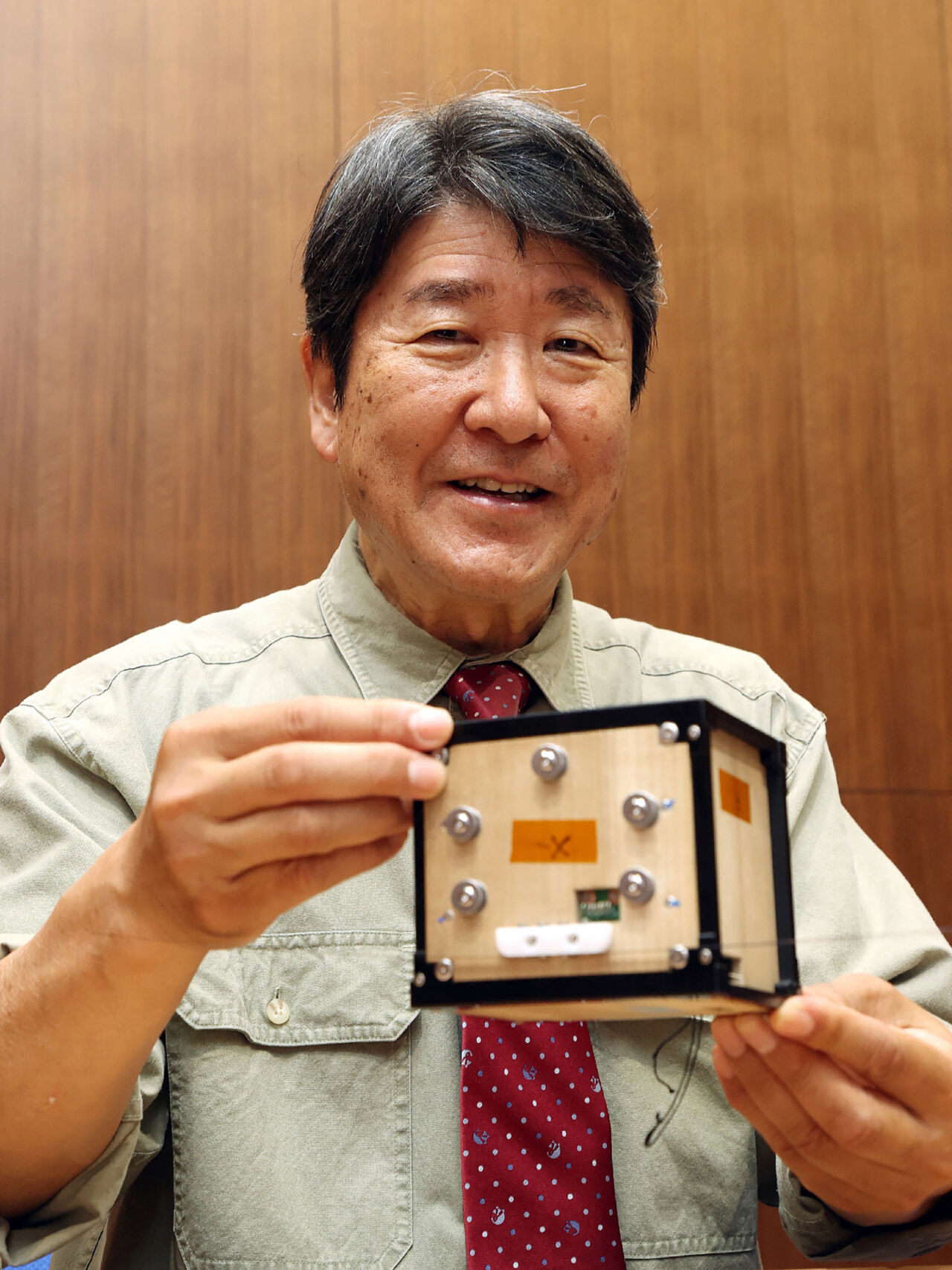The LignoSat wooden satellite was developed by Kyoto University and is made from magnolia wood from Sumitomo Forestry Company’s forest.
The satellite is equipped with solar panels, and was assembled by researchers using traditional Japanese technology that does not require screws or glue.
Less metal particles, less air pollution
After the satellite reaches its maximum lifetime, gravity pulls it back into the atmosphere and the satellite partially ignites. Sometimes, small, unburned parts end up on land, usually in the sea.
But this combustion also releases chemicals such as aluminum oxide, which then remain in the atmosphere for years.
The intention is that the LignoSat’s wood will burn completely when the satellite reenters the atmosphere, which will release fewer metal particles and thus reduce air pollution.
Takao Doi, astronaut and professor at Kyoto University, with the first wooden satellite
Photo: Belga
“Satellites that are not made of metal should be preferred,” said Takao Doi, an astronaut and endowed professor at Kyoto University.
Research into how wood behaves in space
The developers plan to deliver the LignoSat to the Japanese space agency JAXA next week. In September, the satellite will be launched into space aboard a SpaceX rocket from Kennedy Space Center, on its way to the International Space Station.
The satellite will then be launched from the Japanese experimental module of the International Space Station. Tests are then performed to look at the expansion and contraction of the wood, internal temperature, geomagnetism, and the performance of electronic equipment.
“The potential of wood as a sustainable resource is great,” says Takao Doi. “In the future, we want to build human habitats using wood in space, for example on the Moon and Mars.”

“Total coffee specialist. Hardcore reader. Incurable music scholar. Web guru. Freelance troublemaker. Problem solver. Travel trailblazer.”








More Stories
GALA lacks a chapter on e-health
Weird beer can taste really good.
Planets contain much more water than previously thought